| |

Traditions, folklore, history and more. If it's Irish, it's here. Or will be!
"People will not look forward to posterity who never look backward to their ancestors."
-Edmund Burke




Quotes
Library: Books, Movies, Music
Prints & Photos
Poetry
Jokes


Shops Ireland
Bunús na Gaeilge
(Basic Irish)
Circle of Prayer
Blessings
Did You Know?
Himself/Herself
Write to Us
Readers Write..
Links/Link to Us
Advertise with us
Awards & Testimonials
Submissions Guide

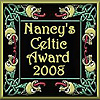
|
|
|
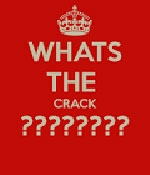 The word 'craic'... a linguistic lie? The word 'craic'... a linguistic lie?
Edited and adapted by Bridget Haggerty
That's the opinion of the Irish journalist Donald Clarke and it's shared by the late Professor Diarmaid O Muirithe, a lecturer in Irish at University College Dublin. He described craic as "a hideous neologism". Another linguist described it as "fake Irish" and journalist Kevin Myers criticised it as "pseudo-Gaelic" and a "bogus neologism". What they are referring to, of course, is the relatively recent introduction of a so-called Irish translation for the Ulster-Scots word 'crack.'
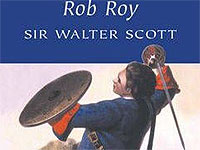 History shows that the word has been used widely in Ulster for several hundred years. Folk often visited their neighbours for "a bit o crack" and, on other occasions, they would stop to speak to someone in the street and ask: "What's the crack?" Walter Scott used the word in Rob Roy and the Paisley poet Ebenezer Picken wrote of "the friendly crack, the cheerful' sang". Robert Burns also used it, and his glossary defined it as "to chat, to talk", although most readers in Scotland and Ulster would have had no need of the glossary. History shows that the word has been used widely in Ulster for several hundred years. Folk often visited their neighbours for "a bit o crack" and, on other occasions, they would stop to speak to someone in the street and ask: "What's the crack?" Walter Scott used the word in Rob Roy and the Paisley poet Ebenezer Picken wrote of "the friendly crack, the cheerful' sang". Robert Burns also used it, and his glossary defined it as "to chat, to talk", although most readers in Scotland and Ulster would have had no need of the glossary.
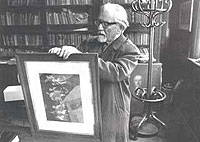 In the 18th century, the word was used by the Ulster-Scots weaver poets, and in his book about the Rhyming Weavers, John Hewitt included it in the glossary with the meaning "to talk, to banter". James Fenton also includes it in The Hamely Tongue as meaning "fun, entertainment and conversation" and provides examples of its use, such as "He's guid crack". Brave Crack! An Anthology Of Ulster Wit And Humour was published in Belfast in 1951, and in 1980, the Ulster playwright Brian Friel penned the line "You never saw such crack in your life, boys" in Translations - a play about language. In the 18th century, the word was used by the Ulster-Scots weaver poets, and in his book about the Rhyming Weavers, John Hewitt included it in the glossary with the meaning "to talk, to banter". James Fenton also includes it in The Hamely Tongue as meaning "fun, entertainment and conversation" and provides examples of its use, such as "He's guid crack". Brave Crack! An Anthology Of Ulster Wit And Humour was published in Belfast in 1951, and in 1980, the Ulster playwright Brian Friel penned the line "You never saw such crack in your life, boys" in Translations - a play about language.
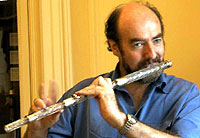 Around the mid-20th century, the word was borrowed into the Irish language from Scotland and Northern Ireland, with the Gaelicised spelling 'craic'. For some Gaelic speakers, the claim that the word originated in that language is an annoyance. Diarmaid Ó Muirithe, the lecturer mentioned earlier, wrote in the Irish Times that, “the constant Gaelicisation of the good old English-Scottish dialect word crack as craic sets my teeth on edge." Irish traditional musician Fintan Vallely suggested similar annoyance by the use of the word ‘craic’ in his book, ‘Companion to Irish Traditional Music’, published in 1999. Vallely, who played music frequently both north and south of the border, states that he had never heard the word spoken in Dublin until the late 1980s. Around the mid-20th century, the word was borrowed into the Irish language from Scotland and Northern Ireland, with the Gaelicised spelling 'craic'. For some Gaelic speakers, the claim that the word originated in that language is an annoyance. Diarmaid Ó Muirithe, the lecturer mentioned earlier, wrote in the Irish Times that, “the constant Gaelicisation of the good old English-Scottish dialect word crack as craic sets my teeth on edge." Irish traditional musician Fintan Vallely suggested similar annoyance by the use of the word ‘craic’ in his book, ‘Companion to Irish Traditional Music’, published in 1999. Vallely, who played music frequently both north and south of the border, states that he had never heard the word spoken in Dublin until the late 1980s.
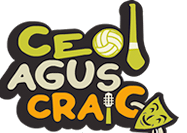 But how did crack become craic? One theory is that the basic Irish alphabet has just 18 letters, while the English alphabet has 26. One of the letters missing in the Irish alphabet is 'k', which is the final letter in 'crack', and, as a result, it was Gaelicised as 'craic' changing the spelling as it did so as to represent the same sound phonetically but in a way that is true to the Irish language. Whether the theory holds any water or not, craic has been written in this way since at least July 1968, when an Irish language advertisement in the Connacht Sentinel newspaper referred to "ceol agus craic" - a phrase which means music and fun. But how did crack become craic? One theory is that the basic Irish alphabet has just 18 letters, while the English alphabet has 26. One of the letters missing in the Irish alphabet is 'k', which is the final letter in 'crack', and, as a result, it was Gaelicised as 'craic' changing the spelling as it did so as to represent the same sound phonetically but in a way that is true to the Irish language. Whether the theory holds any water or not, craic has been written in this way since at least July 1968, when an Irish language advertisement in the Connacht Sentinel newspaper referred to "ceol agus craic" - a phrase which means music and fun.
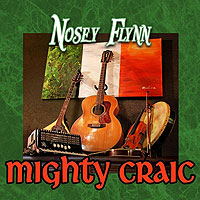 Spelled as 'craic', the word was then popularised by legendary presenter Seán Bán Breathnach in the catch phrse "Beidh ceol, caint agus craic againn" - "We'll have music, chat and craic" which he used on the RTÉ show Raidió na Gaeltachta broadcast from 1976 to 1982. Spelled as 'craic', the word was then popularised by legendary presenter Seán Bán Breathnach in the catch phrse "Beidh ceol, caint agus craic againn" - "We'll have music, chat and craic" which he used on the RTÉ show Raidió na Gaeltachta broadcast from 1976 to 1982.
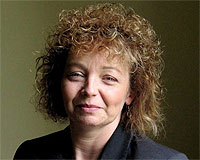 More recently, the word has been borrowed back into English. Nelson McCausland, who was one of my sources and the inspiration for this article, suspects that the use of the 'craic' spelling in English was a by-product of marketing Irish pubs in the 1990s as tourist attractions featuring lots of "craic". Culture Minister Caral Ni Chuilin entered the fray with a series of TV commercials as part of her Irish language Liofa project. These claimed that, when you say "craic", you are speaking Irish. The Dubliners added to the linguistic lie in 2006 when they released the hit, The Craic was Ninety on the Isle of Man. Even Guiness gave it credibility. More recently, the word has been borrowed back into English. Nelson McCausland, who was one of my sources and the inspiration for this article, suspects that the use of the 'craic' spelling in English was a by-product of marketing Irish pubs in the 1990s as tourist attractions featuring lots of "craic". Culture Minister Caral Ni Chuilin entered the fray with a series of TV commercials as part of her Irish language Liofa project. These claimed that, when you say "craic", you are speaking Irish. The Dubliners added to the linguistic lie in 2006 when they released the hit, The Craic was Ninety on the Isle of Man. Even Guiness gave it credibility.
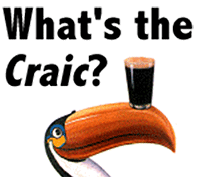 I am reminded of another marketing strategy which saw the creation of the blatantly phony story that on the Aran Isles, families could identify a drowned man by the pattern of his sweater. It was totally made up but it sold lots of sweaters! I am reminded of another marketing strategy which saw the creation of the blatantly phony story that on the Aran Isles, families could identify a drowned man by the pattern of his sweater. It was totally made up but it sold lots of sweaters!
Is it too late to boycott craic and replace it with a more genuinely Gaelic word that also means fun? Perhaps spraoi - pronounced spree? Alas, I doubt if we can stem the tide of crack written as craic; these days, you'll even see it on bus ads in Belfast. But no one seems to mind. May be it's just too trivial to worry about. That is, until you come across a well-meaning irish web site and see it defined as follows:
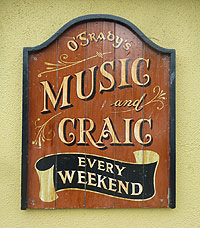 "Craic is a quintessentially Irish expression, a word that is used in so many contexts it can be difficult to define – even for the native Irishman or Irishwoman. Not only is it pronounced 'crack,' but to make it even more mysterious, it is often spelled 'c r a c k' - even when the Irish meaning is intended." "Craic is a quintessentially Irish expression, a word that is used in so many contexts it can be difficult to define – even for the native Irishman or Irishwoman. Not only is it pronounced 'crack,' but to make it even more mysterious, it is often spelled 'c r a c k' - even when the Irish meaning is intended."
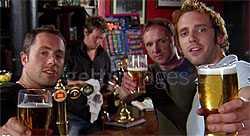 As opposed to getting annoyed when I read those lines, I cracked up - all puns intended. And I gave up. It may have begun as a linguistic lie, but today, craic is ubiquitous in Irish culture and anyone born after 1960 will think it was always a part of the Irish language as well as representative of how the irish are perceived globally - people who are friendly, talkative and know how to have fun. An that's no word of a lie. As opposed to getting annoyed when I read those lines, I cracked up - all puns intended. And I gave up. It may have begun as a linguistic lie, but today, craic is ubiquitous in Irish culture and anyone born after 1960 will think it was always a part of the Irish language as well as representative of how the irish are perceived globally - people who are friendly, talkative and know how to have fun. An that's no word of a lie.
Content Sources:
Nelson McCausland/irish Independent
Shamerocks: Bad Craic
Wikipedia
Definition
Images:
What's the Crack
Rob Roy: Lobros
John Hewitt/Culture Northern Ireland
Fintan Fallely/Belfast Trad
Nosey Flynn
Caral Ni Chuillin: Belfast Telegraph
Guinness Advert: Shamerocks
Ceol Agus Craic: Saturday Irish Radio
Pub Sign: Alamy
Young People in the pub/Getty Images
|
|
Fri, Sep 27, 2024
 The Galway Hooker The Galway Hooker
This unique vessel, with its distinctive curved lines and bright red sails, originated in the village of Claddagh. During the 19th century, hookers supported a significant fishing industry and also carried goods, livestock and fuel. Seán Rainey is remembered for building the last of the original boats, the Truelight, for Martin Oliver who was to become the last king of the Claddagh; as king, he was entitled to white sails on his boat. Since the mid seventies, many of the old sailing craft which were on the verge of extinction have been lovingly restored and new ones have been built. During the summer months they can be seen at festivals such a Cruinniú na mBád - the Gathering of the Boats - in Kinvara.
Click for More Culture Corner.
|
|




 The Galway Hooker
The Galway Hooker